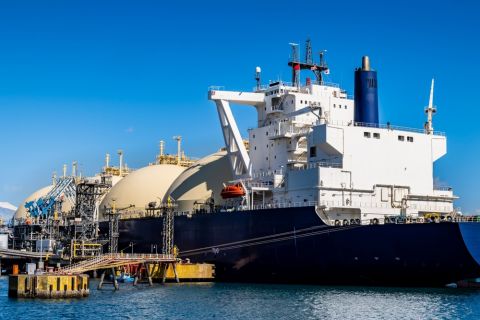Participating in a massive heavy-oil-sands project in northern Alberta requires a great deal of financial creativity and flexibility, according to David A. Dyck. The chief financial officer of Calgary-based Western Oil Sands Inc. (Toronto: WTO) spoke to Houston Energy Finance Group members recently about the financing strategy the company follows to stay in the game. With a market cap of C$2.2 billion, Western has only one asset-a 20% partnership in the C$5.7-billion Athabasca oil-sands project in northern Alberta. Its partners are Shell Canada with a 60% operating interest and ChevronTexaco with 20%. The joint venture is now developing one of the world's largest oil reservoirs, containing an estimated 9.7 billion bbl. of recoverable oil on five mining leases north of Fort McMurray, Alberta. The equity owners in the project include many long-term U.S. and Canadian institutions, "a real strength in our back pocket," Dyck said. Since 1999 the company has raised C$573 million in 15 equity transactions as its share price has steadily risen from C$2.50 to C$34. The compounded annual growth rate in share price has been 29% since the company went public in December 2000. At the same time, the company has closed 14 separate debt transactions for a total C$2.5 billion raised in debt and equity. In 2002, it closed on a US$450-million, 10-year bond offering in the U.S. market, but the majority of the deals were in Canada. In third-quarter 2004, the Athabasca project achieved its first peak production, some 155,000 bbl. a day, that declined slightly in the fourth quarter due to some required maintenance procedures, Dyck said. The company hopes to reduce its costs from about C$20 per bbl. currently to under C$12, based on gas prices in Alberta being US$4 per thousand cu. ft. Gas is used in the bitumen-to-liquid conversion process. Western's long-term price deck is US$30 for oil and US$5 for gas. The economics of mining and upgrading the oil sands are favorable now in part because the Canadian government has set a royalty of only 1% on production until the project pays out. Western forecasts production in 2005 will average 155,000 bbl. per day, gross, and revenues will be about C$440 million, or about C$4.19 in earnings per share. The goal is to boost production to 180,000 bbl. per day by 2006. -Leslie Haines
Recommended Reading
China’s Stimulus Could Reignite Fuel Demand Long-term
2024-09-25 - In China’s biggest stimulus package since the COVID-19 pandemic, the government is attempting to reverse the country’s recent deflationary trend and boost fuel demand.
What's Affecting Oil Prices This Week? (Oct. 14, 2024)
2024-10-14 - Similar to last week, Stratas Advisors forecast that oil prices will be relatively flat with a downward bias unless there is another military strike of note.
Hotter Temps Drive Japanese Demand for Spot LNG from US
2024-09-11 - Above-average temperatures are forecast for most regions of Japan through early October, compelling the country to seek prompt LNG, potentially from the U.S., to cover extended summer-related electricity demand.
Darbonne: ‘The Dance’ of US Policy Leaving Energy Mid Slip
2024-09-05 - The 1909 Matisse painting known as “The Dance” demonstrates the outcome of one of the U.S.’ pillars falling down.
Oil Prices Jump 4% on Reports of Iran Preparing to Attack Israel
2024-10-01 - An Israeli attack on Iranian oil production or export facilities could cause a material disruption, potentially more than a 1 MMbbl/d.
Comments
Add new comment
This conversation is moderated according to Hart Energy community rules. Please read the rules before joining the discussion. If you’re experiencing any technical problems, please contact our customer care team.




